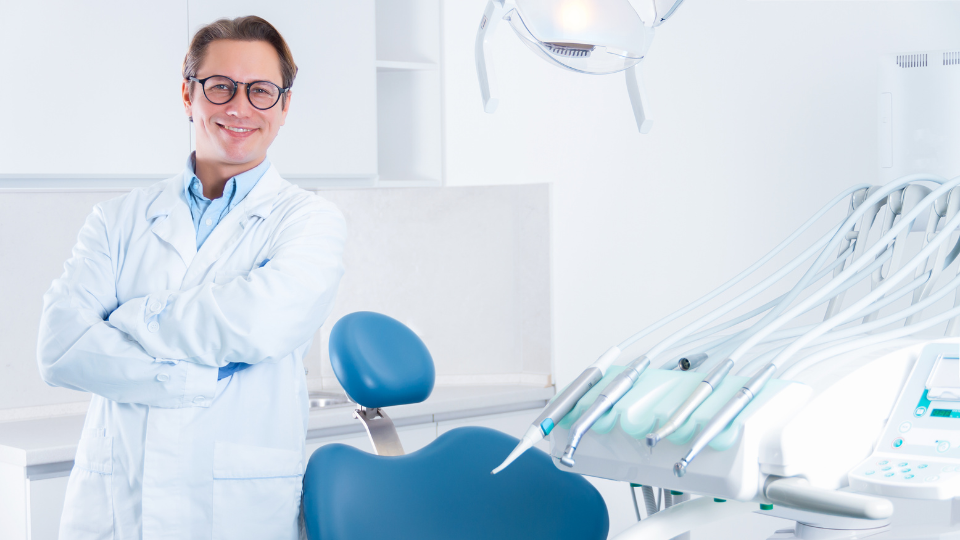What to Eat After Tooth Extraction: 24 Hours, 48 Hours, and Beyond
.png)
After a tooth extraction, one of the most important parts of recovery isn’t just rest, it’s your diet. Choosing the right foods (and avoiding the wrong ones) helps protect the healing site, reduce discomfort, and prevent complications like dry socket or infection.
In this guide, we’ll walk you through exactly what to eat after tooth extraction, including:
- What to eat in the first 24 hours
- What’s safe after 48 hours
- When you can return to solid food
- Whether it’s okay to eat ice cream
- And common mistakes to avoid
Let’s dive into what your recovery diet should look like, and why it matters.
What Can I Eat After Tooth Extraction?
The first few days after a dental extraction are all about protecting the blood clot that forms over the surgical site. Dislodging it too soon can lead to dry sockets, a painful condition that can delay healing.
That’s why, in the first 24 hours, the focus should be on soft, cool, and non-irritating foods. Your body is still forming the clot and beginning the healing process.
What can I eat 24 hours after tooth extraction?
Stick with very soft foods that don’t require chewing:
- Smoothies (no straw)
- Applesauce
- Mashed potatoes
- Plain yogurt
- Pudding or gelatin
- Lukewarm broths or blended soups
Avoid anything crunchy, sticky, hot, or spicy. These foods can irritate the area, increase bleeding, or interfere with clot formation.
The American Dental Association (ADA) recommends avoiding any suction actions, such as drinking through a straw, for at least 24 hours to minimize the risk of dry socket.
What Can I Eat 48 Hours After Tooth Extraction?
By the 48-hour mark, your mouth may start to feel more comfortable, but healing is still underway. You can begin to introduce more variety, as long as the food is soft and easy to chew.
- Scrambled eggs
- Soft-cooked pasta
- Cottage cheese
- Soft steamed vegetables (e.g., carrots, zucchini)
- Mashed avocado
- Oatmeal (cooled)
While these foods are gentle on healing tissues, it’s still best to chew away from the extraction site and rinse your mouth with salt water after meals to keep the area clean.
Can I Eat Ice Cream After Tooth Extraction?

Yes, ice cream can be safe to eat after a tooth extraction, especially within the first couple of days when your mouth may be sore or swollen. The cold temperature can provide temporary relief and reduce inflammation.
However, there are a few guidelines:
- Choose plain, soft ice cream (no nuts, cookie bits, or cones)
- Wait until the numbness wears off before eating to avoid biting your tongue or cheek
- Avoid ice cream that is very cold or hard-frozen
- Don't use a straw to eat milkshakes or floats
While a small scoop of vanilla can be soothing, moderation is key, especially if you’re prone to sensitivity or if dairy triggers mucus production that could irritate your throat.
When Can I Eat Solid Food After Tooth Extraction?
Every patient heals at a different pace, but many people can begin eating soft solid foods after about 5 to 7 days. You should wait until you can chew comfortably and there are no signs of infection or prolonged discomfort.
When can I eat solid food after tooth extraction?
- Around Day 5–7: Soft solid foods like rice, baked fish, tender chicken, or well-cooked vegetables
- Around Day 10 and beyond: Return to normal eating, depending on how your mouth feels
According to Colgate Oral Health Center, healing times vary depending on the location of the tooth, your health history, and how well you follow aftercare instructions. Always consult your dentist before returning to crunchy or chewy foods.
Foods and Habits to Avoid After Tooth Extraction
Here’s what to steer clear of for the first week post-extraction:
- Crunchy foods: chips, crackers, nuts, popcorn
- Sticky foods: gum, caramel, chewy candies
- Hot foods or drinks: coffee, tea, soup
- Spicy or acidic foods: citrus, tomatoes, vinegar-based dressings
- Carbonated beverages
- Alcohol and tobacco: these can impair healing and increase the risk of infection
- Straws: any suction can dislodge the healing clot
Protecting the extraction site is just as important as taking pain relievers or antibiotics. With the right choices, you can prevent complications and get back to normal eating faster.
Tips to Support Healing Through Diet
- Hydrate well, but sip gently from a cup
- Chew slowly, away from the extraction site
- Brush carefully, avoiding the surgical area
- Rinse with salt water after 24 hours to reduce bacteria and inflammation
- Rest as much as possible during the first 48 hours
If pain worsens after a few days, or if you experience unusual swelling, bleeding, or a foul taste, contact your dentist promptly.
Keep Your Smile Healthy Long After Healing
Recovering from a dental procedure is the perfect time to reassess your daily oral care habits. Brushing twice a day, flossing regularly, and scheduling cleanings every 6 months can prevent future extractions and keep your smile healthy long-term.
For more on building healthy daily habits, explore our related blog: How to Maintain Your Oral Health Between Dental Visits
Expert Care Every Step of the Way
At West Soho Dentistry in New York, we believe healing doesn’t end when you leave the chair. We’ll walk you through every part of your recovery, including what to eat, how to care for your mouth, and what signs to watch for.
Have questions about post-op care or upcoming procedures? Schedule your appointment today and let our team guide you with compassionate, expert support.

.png)
